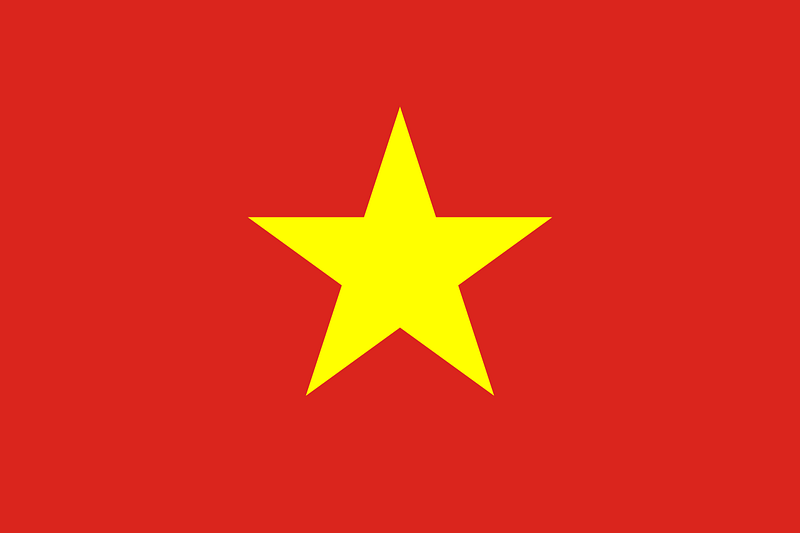This travel wiki page of Vietnam will help guide travelers with quick and relevant information to consider when planning and visiting the country. It is difficult to find all the relevant information you need on Vietnam culture, safety, travel restrictions, and things to do, so we summarize it all here. If anything is stale or outdated, please let us know! Let’s dive in and explore more high-level information as a Vietnam trip planner.
Last updated February 27th of 2023.
Table of contents
National Information & Culture
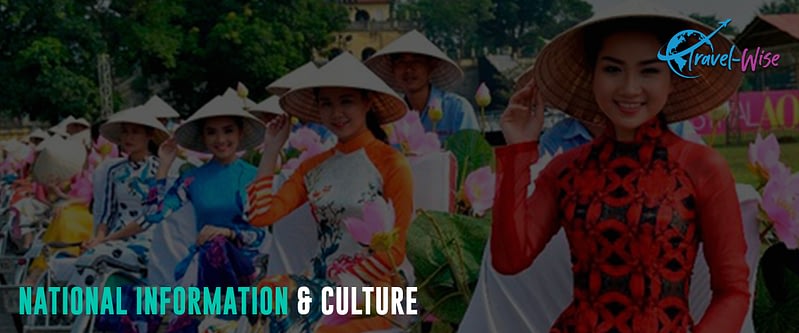
Vietnam, or Viet Nam, officially the Socialist Republic of Vietnam, is a country in Southeast Asia that shares borders with China, Laos, and Cambodia. Although the capital is Hanoi, its largest city is Ho Chi Minh (Saigon). Its official currency is the Vietnamese Dong, with the symbol ₫ and VND as code.
Vietnam has one of the richest cultures in Southeast Asia, with significant influence from the Chinese, Japanese, Malay, and French. Its most significant aspects of culture come from the teachings of Confucius. For them, family is essential, and it is common to see three or four generations living under the same roof. In addition, Vietnamese culture value education, seniority, and great respect for elders.
Visitors must take off their shoes and hat when visiting homes and temples. Make sure to dress modestly when going to temples. Ask permission before taking photographs of people, houses, buildings, and government offices.
When on the roads, it is common to see motorbikes and scooters. Motorbike owners comprise over 40% of the population and use it as a primary mode of transport. And with vehicles crisscrossing in any direction, traffic can be chaotic and overwhelming.
Lastly, bargaining is common in Vietnam, especially in markets and small shops. So prepare to haggle over the price unless the product has a fixed tag.
Visit the Official Tourism Website of Vietnam for more tips and information when planning your trip.
Special Travel Considerations
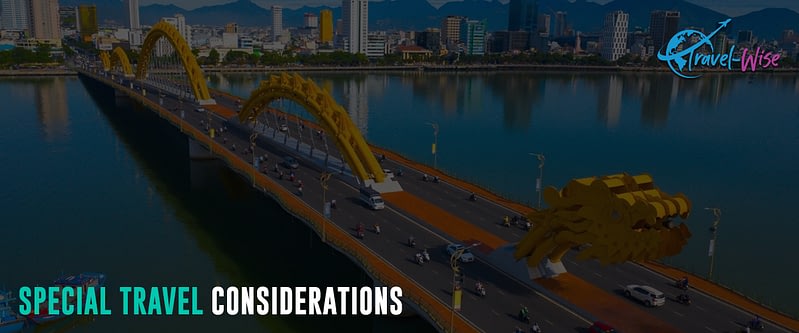
Each country and destination has rules and regulations that every traveler must consider. Hence, check the following considerations for hassle-free travel to Vietnam.
Covid-19 Policy
As of May 15, 2022, Vietnam is now fully open for international tourism without Covid-19 restrictions. Therefore, when entering Vietnam, travelers do not need to present a Covid-19 vaccination certificate, test requirements, quarantine, or medical declaration. However, the guidelines may vary over time due to the evolution of the pandemic, and checking the country’s latest Covid-19 policy before your trip is best.
Travel Insurance
All visitors to Vietnam must have mandatory travel insurance with a minimum coverage of $10,000. The insurance should cover emergency medical treatment, including COVID-19, repatriation, and evacuation. Moreover, travel insurance can protect you against injury, theft, and flight cancellations. It is a comprehensive protection in case anything goes wrong with your trip.
Visa Information
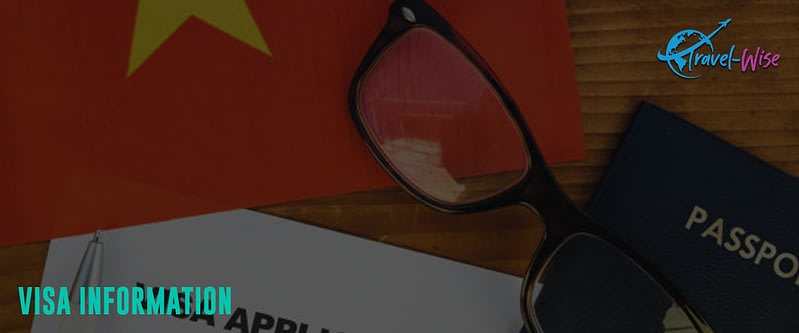
Visitors from 22 Asian and European countries are visa-exempt when traveling to Vietnam and can stay from 14 to 30 days. If they wish to stay beyond that, they may apply for a visa extension upon their arrival in Vietnam.
On the other hand, travelers from other countries must secure a visa from the nearest Vietnamese Embassies or Consular Offices. Citizens from 80 countries can also apply for an e-Visa to Vietnam. Processing time takes three days for an e-Visa fee of $25.
Otherwise, travelers can get a visa at the border gates if they are traveling on a tour package organized by Vietnamese travel companies or invitees by competent organizations in Vietnam.
In addition to visas, all visitors to Vietnam must have at least six months of a valid passport, return ticket, and travel insurance to enter the country.
Popular Attractions
Vietnam has many beautiful and fascinating tourist attractions that showcase its rich history, culture, and natural beauty. Here are some of the top tourist attractions you must visit in Vietnam:
Ha Long Bay
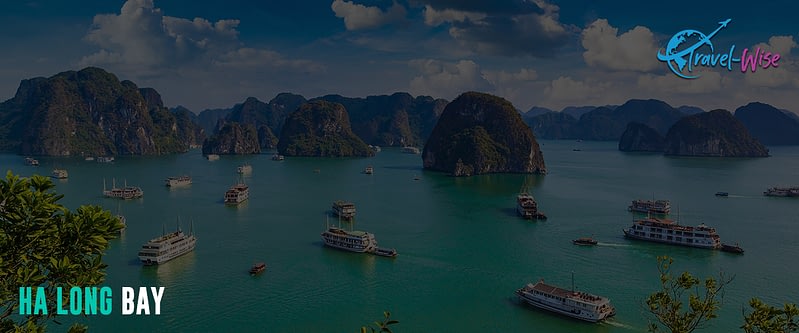
Ha Long Bay, translated as Bay of Descending Dragons, is a UNESCO World Heritage Site famous for its thousands of stunning limestone karst island formations and emerald green waters. Many of the islands are hollow and with plenty of caves to explore, such as the Sung Sot Cave, with three mammoth caverns, and the Dau Go Cave, with its superb stalagmites and stalactites. Other islands even have lakes and some support floating villages of fishermen.
A must-try in Ha Long Bay is cruising amid the karst formations, visiting some islands and caves, or kayaking. It is best explored overnight to see the iconic views and changing sceneries of the pinnacles.
The best time to visit Ha Long Bay is spring (March to May) or fall (September to November) when the weather is mild and the skies are clear. During these months, travelers can expect sunny days and comfortable temperatures, making it an ideal time to cruise and explore the bay.
Imperial Citadel of Hue
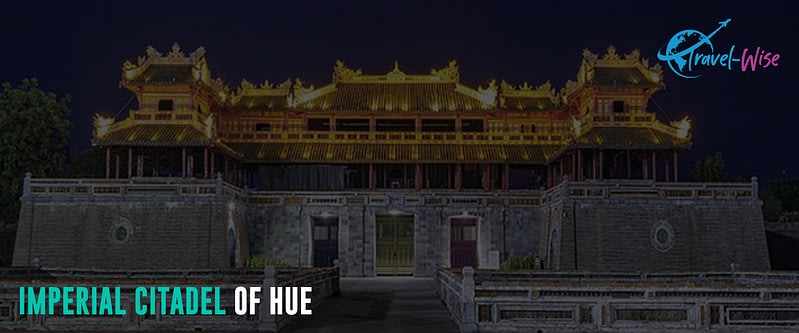
Hue, the former imperial capital of Vietnam, is home to many historic sites, including the Citadel and the Tombs of the Emperors. The Imperial Citadel of Hue was also a strategic hold during the Vietnam War, as it stands very close to the demilitarized zone that separated North and South Vietnam. It is a must-visit for travelers interested in the nation’s history.
The center highlight of the citadel was the Purple Forbidden City, exclusively for the royal family. Other landmarks include the citadel’s main entrance, the Ngo Mon Gate, the Thai Hoa Palace with intricate interiors, the Dien Tho Residence, where the Queen Mothers would live, and the Hall of Mandarins with its preserved ceiling murals.
One of the best ways to explore the outlying sites is by taking a riverboat cruise on the Perfume River and visiting several royal tombs and some pagodas. The best tomb to see is the Tomb of Tu Doc, and the most important pagoda in the area is the Thien Mu Pagoda, with its 21 meters high tower.
Hoi An
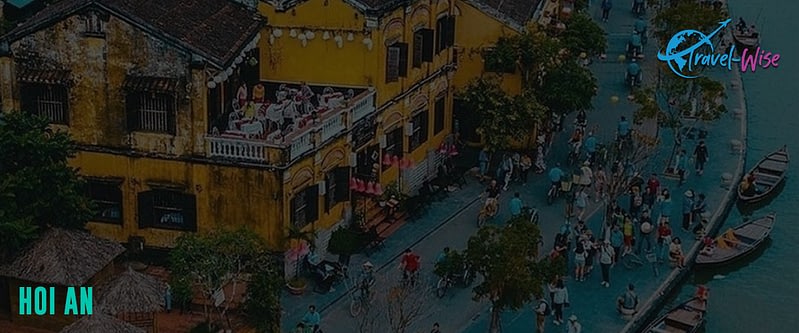
Hoi An is an old city in Quảng Nam Province on the coast of the South China Sea and is a UNESCO World Heritage Site. It was once an international port but is now a tourist attraction famous for the line-up of rustic yellow-walled tubed buildings.
The city’s historic district, Old Town Hoi An, features exceptionally well-preserved trading port and merchant houses dating from the 15th to the 19th century. Its buildings and the street plan reflect a fusion of indigenous and foreign influences, mainly Chinese and Japanese. Also notable in the Old Town Hoi An is its covered Japanese Bridge dating to the 16th–17th century. The most highly decorated temple, the Fujian Chinese Congregation Assembly Hall, is nearby. On top of that, Thanh Ha Pottery Village, Tra Que Herb Village, and Kim Bong Carpentry Village, all featuring Chinese Architecture, are must-visits for tourists in Hoi An.
My Son Sanctuary
My Son is an ancient archaeological site in central Vietnam near Hoi An. A UNESCO World Heritage Site, My Son is also an important historical relic representing the Cham kingdom’s existence from the 4th to the 13th century. The site features a collection of Hindu temples and towers, with around 20 still possible to explore for tourists. The temples surround the lush jungle and mountain landscapes, giving a peaceful and spiritual atmosphere.
Moreover, the site is also home to a museum, which displays artifacts and information about the Cham culture and history.
Ho Chi Minh City
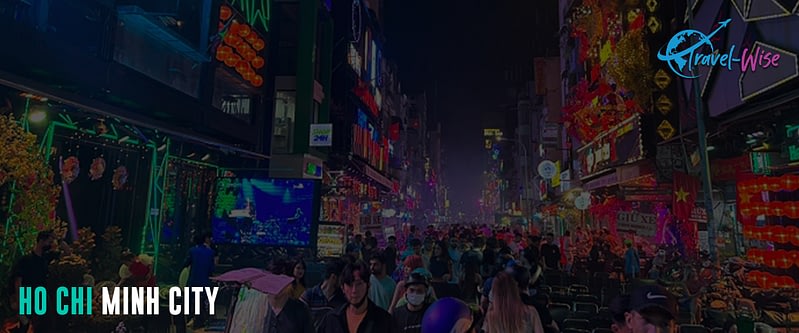
Ho Chi Minh City, formerly Saigon, is Vietnam’s buzzing and vibrant commercial hub. Travelers will find attractions influenced by French-era architecture, such as Vietnam’s Notre Dame Cathedral, the War Remnants Museum, and Ben Thanh Market. Other attractions include the Ho Chi Minh City Museum, Jade Emperor Pagoda, and the History Museum.
The Reunification Palace is a must-visit attraction for many visitors who are into history. It is further known as Independence Palace, which was the residence of South Vietnam’s president. In addition, it is famous as the spot where North Vietnam’s tanks stopped on April 30, 1975, officially ending the war. Nearby is the War Remnants Museum, with displays of war relics.
Ho Chi Minh City is also a stop-over for tourists visiting Mekong Delta, Cu Chi Tunnel, Cao Dai temple, Vung Tau, and the other southern provinces.
Hanoi
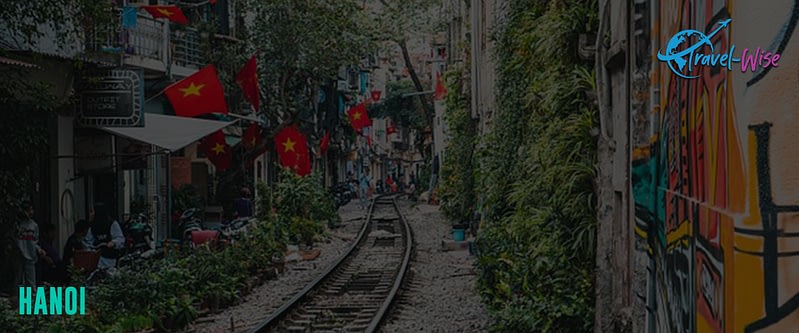
Hanoi, the capital of Vietnam, is a fascinating and vibrant city that offers a unique blend of history, culture, and modernity. It attracts millions of annual visitors, being the gateway to other destinations in northern Vietnam, such as Ha Long Bay, Sapa, and Ninh Binh.
A must-visit in Hanoi are the Old Quarter, Long Bien Bridge (over 100 years old), Hoa Lo Prison (Hilton House), Temple of Literature, Bat Trang pottery village, Hoan Kiem Lake, and Ngoc Son Temple. Visitors will also find several museums here, such as the Vietnam Museum of Ethnology and the Vietnam Fine Art Museum.
Temple of Literature, Hanoi
The Temple of Literature dates back to 1070 and is dedicated to Confucius, sages, scholars, and the many academic achievements of the Vietnamese. Despite wars and disasters, the temple has preserved the ancient architectural styles of many dynasties and precious relics.
The temple also hosts Vietnam’s first national university, the Imperial Academy. Visitors will also find pagodas and the Well of Heavenly Clarity pond, among countless statues of Confucius and his disciples.
Sapa Terraces
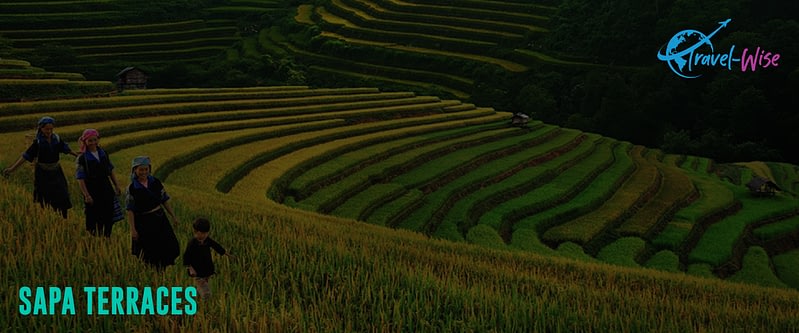
Sapa, a town in Lao Cai Province, is famous for its pristine rice terraces, calm mountain atmosphere, and community of ethnic and tribal people. Among these tribal groups are Hmong, Dao (Yao), Giáy, Pho Lu, and Tày, cultivating the terraces for generations. They have created an engineering marvel where each terrace captures and distributes water from the mountain streams to the fields below.
Tourists can take guided tours in Sapa, hike through the fields, and immerse with local farmers to learn about their traditional way of life. Visitors can also stay in the villages of the ethnic people, experience the local culture and hospitality, and taste their unique cuisines.
The Sapa rice terraces change color with the seasons, creating vibrant greens, golds, and brown mosaics. Hence, an ideal subject for photographers. The best time to visit the Sapa rice terraces is during the planting season (May to June) and the harvest season (September to October).
Mekong Delta
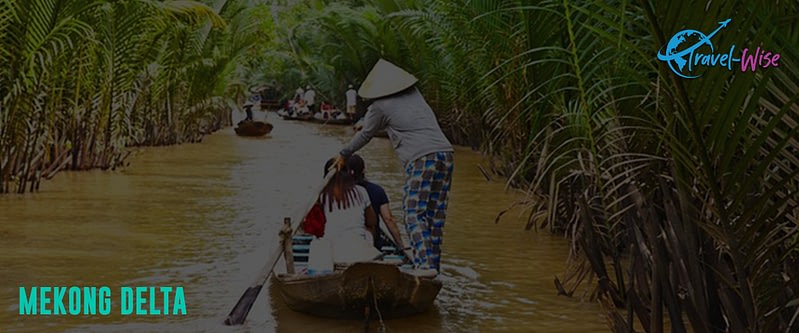
The Mekong Delta is the region in southern Vietnam where the Mekong River empties into the South China Sea. The delta encompasses many rivers, canals, and rice paddies. The delta also produces about half of the total agricultural product in Vietnam.
Travelers can take boat tours of the Mekong Delta, explore the winding waterways, and witness the daily life of the locals. Visitors can also visit floating markets and try the delicious local cuisine, including fresh seafood, tropical fruits, and rice-based dishes. Moreover, visitors can explore the U Minh Mangrove Forest and Cau Mau Nature Reserve.
Life in the Mekong Delta revolves much around the river, where all the villages are accessible by water rather than by road.
Phu Quoc
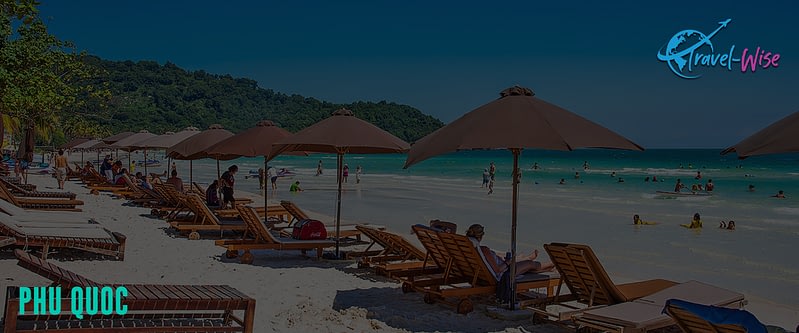
Phu Quoc is Vietnam’s largest and most popular island, with its white-sand beaches, seaside lifestyle, palm trees, and lush tropical forests. Its crystal-clear waters are perfect for swimming, snorkeling, diving, and other water sports. Visitors can also go on island hopping or fishing with local fishermen.
In addition to its stunning beaches, Phu Quoc is also home to several nature reserves. The Phu Quoc National Park, one of the island’s natural attractions, has hiking trails, waterfalls, and streams. It is where visitors can explore the island’s rich biodiversity, including rare species of birds, monkeys, and other wildlife.
With its temperate climate, Phu Quoc is a good choice for all travelers who love nature and seek a place to balance sightseeing and beaches.
Phong Nha-Ke Bang National Park
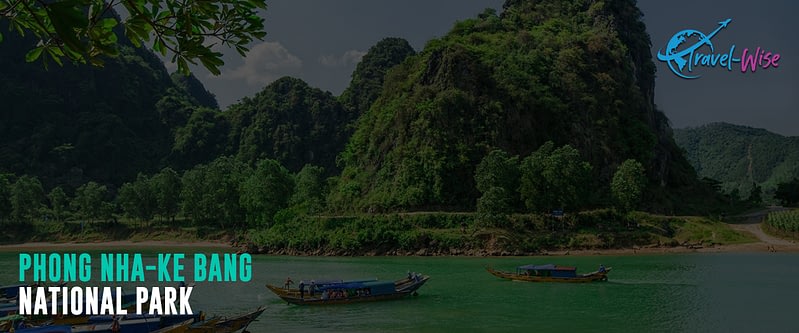
Phong Nha-Ke Bang National Park is a UNESCO World Heritage Site in Quảng Bình Province in the North Central Coast region. It is characterized by mountains, tropical forests and underground rivers, ancient limestone karsts, and vast caves. The area’s diverse and rich wildlife includes tigers, black bears, and elephants. Moreover, the park protects one of the world’s two largest karst regions with 300 caves and caverns and the limestone forests ecosystem of the Annamite Range region. Caves are large enough to hold entire city blocks among the many famous Phong Nha. The most popular destination within the park is the Paradise Cave, extending 31 kilometers below ground, and the Tu Lan Cave, where visitors swim through the cave system’s river.
Today, Phong Nha–Ke Bang national park is a famous destination for international tourists for trekking, hiking, cycling, and kayaking.
Son Doong Cave
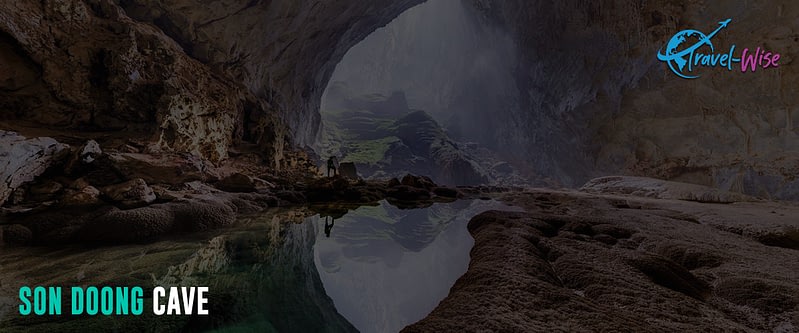
Son Doong Cave is the world’s largest natural cave in Phong Nha-Ke Bang National Park. The cave is over 9 kilometers long, 150 meters wide, and 200 meters high. It features bright-blue water pools, fast-flowing underground rivers, jungle, and microclimate and is approximately over two million years old.
Due to its remote location and delicate ecosystem, access to Son Doong Cave is highly restricted. Hence, only a limited number of visitors are allowed to visit annually through its official and only cave tour operator, Oxalis Adventure. Nevertheless, Son Doong Cave is a must-see destination for adventurous travelers.
Cu Chi Tunnels
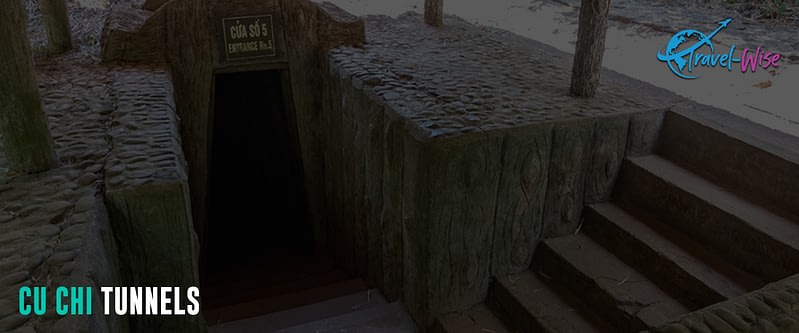
Cu Chi Tunnels are a complex network of 121 kilometers of underground tunnels about 40 kilometers northwest of Ho Chi Minh City. The Viet Cong guerrillas used the tunnels to hide during the Vietnam War and were also the base of operations for the Tết Offensive 1968. Furthermore, the tunnels served as communication and supply routes, hospitals, food and weapon caches, and living quarters for numerous North Vietnamese fighters.
Today, Cu Chi Tunnels are a popular attraction for visitors to explore and crawl the safer parts of the tunnel system and learn more about Vietnam’s history. It was preserved by the government of Vietnam and turned into a war memorial park with two different tunnel display sites. The Ben Duoc site contains part of the original tunnel system, while the Ben Dinh site is closer to Saigon and has undergone tunnel reconstructions.
Primary Spoken Language(s)

The majority of the population in Vietnam speaks Vietnamese, which is the national language. Minority ethnic groups speak several other languages. It includes Tay, Muong, Cham, Khmer, Chinese, Nung, and Hmong.
Also, French is a second language among the older generation and educated Vietnamese, especially in former South Vietnam. Today, English has been increasingly used as a second language and has become obligatory in most schools.
Safety Concerns
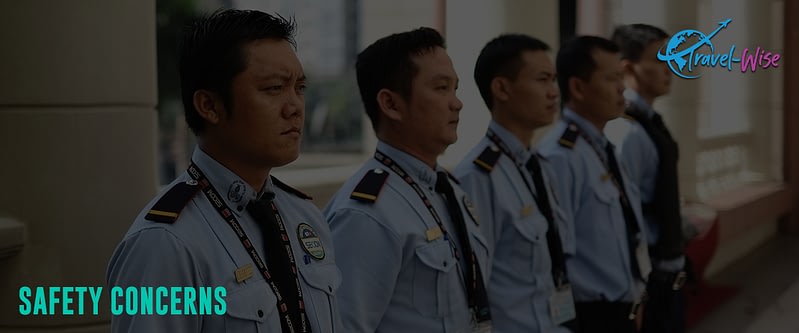
Vietnam is a safe country and destination for travelers, ranking 44th out of 163 countries on the 2022 Global Peace Index, and has a Level 1 Travel Advisory from the US Department of State. Hence, travelers in Vietnam can exercise standard precautions when exploring the country.
Though the country’s crime rates are low, petty theft and snatching are legitimate concerns, especially in the big cities. Therefore, visitors must refrain from flaunting large sums of money or expensive gadgets. Likewise, keep cameras and phones away from traffic flow when taking pictures on sidewalks. Also, always keep a hold of your bags and be mindful of your belongings. Lastly, leave valuables and jewelry at home or in the hotel safe deposit box.
Not only that, but visitors to Vietnam must know of some taxi scams targeting tourists in the form of rigged meters, overcharging, confusing currency, and fixed prices. Look for two reputable and reliable taxi companies, Mai Linh and Vinasun, when looking for taxi rides.
Health Safety
Vietnam tends to be hot and humid, with temperatures rising to 35 °C – 40 °C in some places. Thus, sunburn, dehydration, and heat stroke can be of concern, especially in southern Vietnam.
Mosquito-borne diseases such as dengue and malaria are becoming an issue in Vietnam. Dengue fever occurs mainly in the Mekong Delta, including Ho Chi Minh City, while malaria is heightened in the rural highlands. Therefore, it is best to regularly use mosquito repellant and anti-malarial pills if you travel to remote Vietnam destinations.
Also, travelers to Vietnam can be vulnerable to waterborne and foodborne diseases such as diarrhea. Therefore, drink only boiled or bottled water, eat freshly cooked foods, and avoid raw or undercooked foods.
Lastly, be on the lookout for rabies from animal bites. Avoid the monkeys on Cat Ba Island when touring Ha Long Bay, and be wary of ticks, leeches, and snakes when jungle trekking. Seek immediate help if bitten.
Local Laws
Vietnam imposes life imprisonment and even the death penalty for possessing illegal drugs and marijuana. Possession of pornographic, non-state-sanctioned political or religious activity or materials is also unlawful. Moreover, exporting antiques without a permit from the Ministry of Culture, Sports and Tourism (Vietnamese) is illegal. Lastly, be careful when taking photos, as photographing border areas or military sites is prohibited.
Natural Disaster
Vietnam is prone to typhoons from May to January and flooding during the monsoon season, especially around the Mekong Delta. The monsoon occurs from May to September in northern Vietnam, May to October in southern Vietnam, and September to December in the central part of the country. In case of a natural disaster, always follow the instructions of local authorities.
Budget Considerations
Vietnam is one of the cheapest countries to travel to in Southeast Asia. As a result, the country is becoming the hub of digital nomads and retirees.
Accommodation
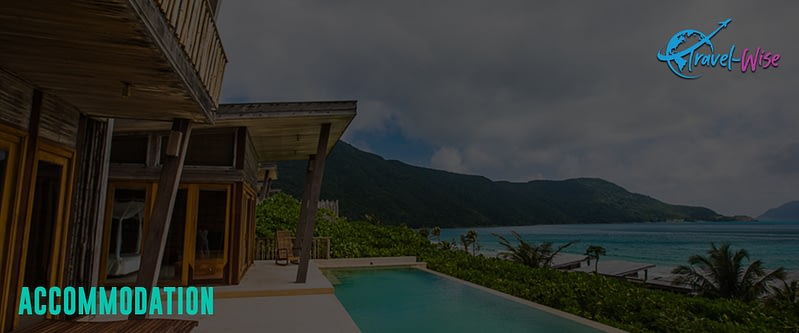
Vietnam has many affordable places to stay, with most accommodations with complimentary breakfast and WiFi. For example, travelers can get a bed in a hostel dorm for as low as $5 per night and $15 for a private room. Moreover, travelers can stay in a three-star hotel for $25 per night and in luxury five-star hotels for $70. Another option for accommodation in Vietnam is Airbnb, where a private room costs around $15, while an entire house costs $25.
Food

Vietnamese cuisines feature fresh and flavorful vegetables with lots of herbs. Rice and noodles are typical, along with fresh farm produce and seafood.
Travelers to Vietnam can get a street food rice meal for less than a dollar, with most sit-down restaurants costing around $2. Western food is more expensive at $5 and goes up to $10 for a three-course meal. Food cost goes even higher in some fancier and tourist areas. However, self-catering for backpackers is uncommon, as meal prices in Vietnam are low.
Attractions and Transportation
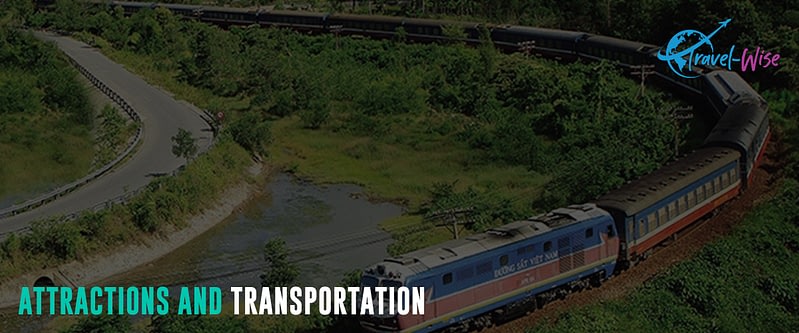
The cost of attractions and activities in Vietnam is inexpensive. For example, a half-day Halong Bay cruise, including lunch, costs $30, while a Mekong Delta tour costs $25. Also, visitors can enter Cu Chi Tunnels for $4.60, Cuc Phuong National Park for only $2, My Son Ruins for $6.30, and Hang Son Doong at $6.30.
Public transportation in Vietnam costs as low as $0.20 for a city bus ticket in Ho Chi Minh City. Other popular transfer modes in the country are Cyclo (three-wheeled bicycle taxi) and Ze Om (motorcycle taxi). Fares on both start at $0.40 and increase according to distance.
Average Two Week Cost
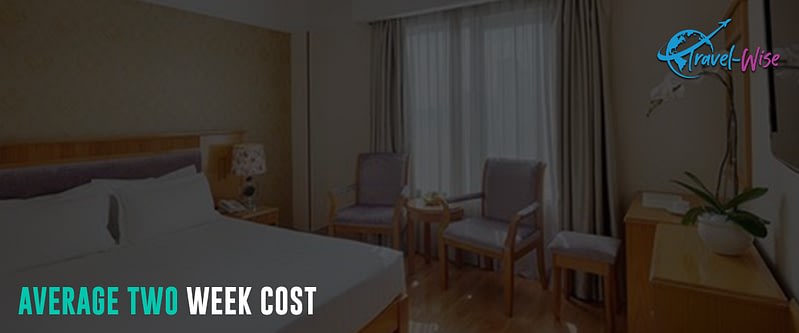
Backpackers in Vietnam can comfortably live with a $30 daily budget or $420 for two weeks. It covers the costs of a hostel dorm bed, dining in cheap sit-in restaurants, taking public transportation, and visiting limited attractions.
On the other hand, mid-range travelers spend $50 daily or $700 for two weeks. The budget includes three-star hotel accommodations, occasional fine dining, taking a taxi, visiting more attractions, and other paid activities.
Lastly, travelers can enjoy luxury in Vietnam from $120 per day or $1680 for two weeks. It includes staying in a five-star hotel, fine dining, car hire and taking domestic flights, and availing all the paid tours and activities they want. So for them, the sky is the limit for travel.
Customs And Import Restrictions
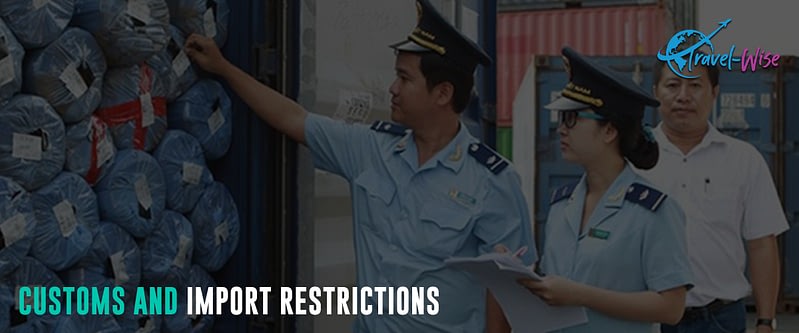
Travelers to Vietnam have a duty-free allowance of goods and items for not more than as follows:
- 1.5 liters of liquor with above 22 degrees of concentration of alcohol and two liters of liquor below 22 degrees of concentration of alcohol
- 400 cigarettes, 100 cigars, and 500 grams of raw tobacco.
- Other items in accompanying baggage are duty-free with a value not over VND 5,000,000 (around $211).
Passengers bringing goods exceeding the duty-free allowance must fill in the Customs Declaration Form No. HQ/2002-PMD and pay duty taxes according to Vietnamese laws.
There are no restrictions on the number of currencies, gold, and precious stones or metals a visitor brings. However, travelers bringing over 300 grams of gold, 15 million Vietnam Dong, and other currencies over $5,000 must declare such items to Customs.
On the other hand, Customs Law in Vietnam prohibits the entry of the following goods and items:
- Weapons, ammunition, explosives, and flammable objects
- Military technical equipment; drugs, opium, and other narcotics
- Anti-government and pornographic materials, etc.
- On top of this, antiques, some types of precious stones, wild animals, and rare and precious plants listed in Vietnam’s red-book could not be exported.
Visit the Vietnam Customs portal for the country’s complete customs and import restrictions list.
Climate Considerations
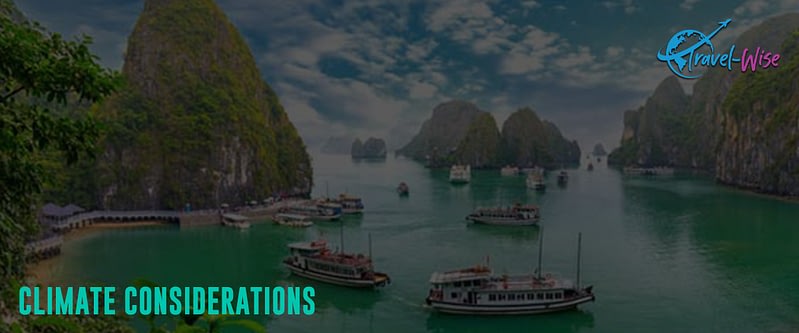
Most of Vietnam has a tropical climate, but the country’s topography and latitudes directly affect the variation in each region. But generally, March to May offers the best weather countrywide. The country receives high rainfall during the monsoon seasons, which causes flooding in the lowlands and cities with poor drainage systems. It is also affected by tropical depressions, storms, and typhoons. As a result, Vietnam is one of Southeast Asia’s most vulnerable countries to climate change, with 55% of its population in low-lying coastal areas.
For example, Northern Vietnam (including Hanoi) has a subtropical climate with the Köppen climate classification and is sometimes affected by cold waves from the Northeast. On the other hand, Sapa has much cooler weather than the rest of the country, particularly from late December until March. It even experiences occasional snowfall in January!
Central Vietnam also has times to be influenced by cold waves. The temperatures in the early parts of the year go down to 15 °C, with some mist in January. Additionally, February to September has cool to cold and rainy weather and are considered storm months. Watch out for occasional flooding from September to November. The rest of the year is dry, having July as the perfect beach weather, with highs of 35 °C.
Southern Vietnam is hot year-round. It is hot and sunny from December to April and hot and rainy from May to November. The average temperature stays around 30 °C.
Primary Transportation Options
Vietnam offers a variety of options to get around: from point-to-point flying, trains, and buses to taxis and cyclos in the cities.
Air
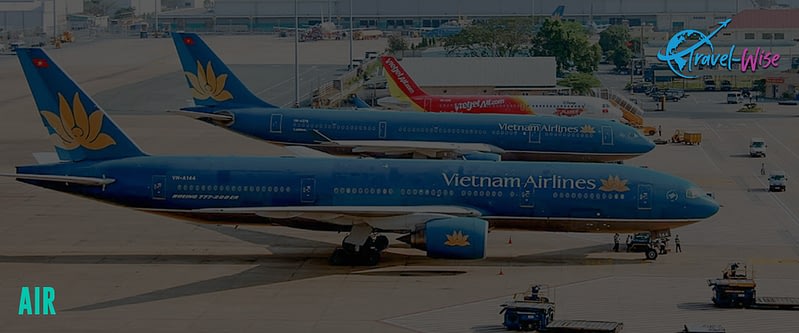
Flying is the most convenient way to explore more destinations in Vietnam in a limited time. The country has 23 international airports, with Ho Chi Minh City’s Tan Son Nhat International Airport being the most significant and central aviation hub. Vietnam Airlines is the country’s flag carrier, and with several domestic and budget airlines presence, local flight tickets are cheap. For example, a one-way flight ticket from Hanoi to Ho Chi Minh costs $25.
Boat
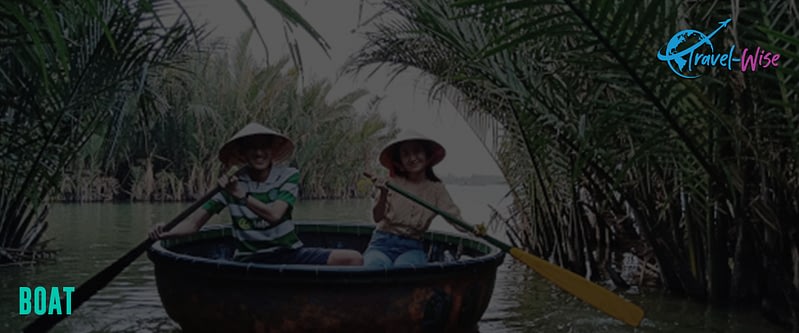
Traveling by boat in Vietnam is a fun way to explore the villages along the Mekong Delta and hop between islands in destinations such as Phu Quoc and Halong Bay. Visitors can also choose among several cruises in Halong Bay and the Mekong Delta. Furthermore, plenty of ferry companies connect the islands in Vietnam.
Train
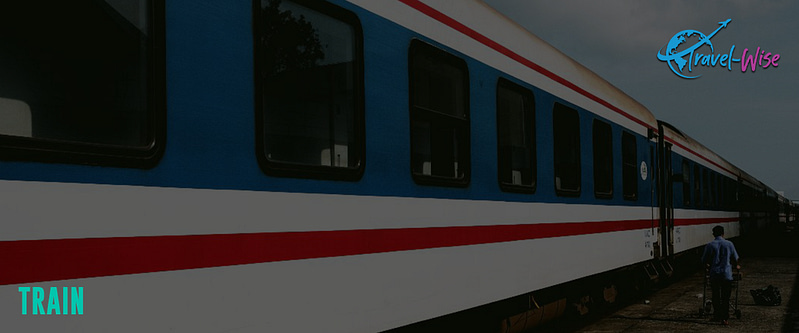
Vietnam has a slow yet reliable train service from north to south (Ho Chi Minh to Hanoi), which is excellent for a short and scenic route. The train network is managed by Vietnam Railways, with timetables and ticket reservations available online. Just like everything in Vietnam, train tickets are affordable. However, travelers are advised to book their tickets in advance during the Vietnamese holidays and peak season.
Buses
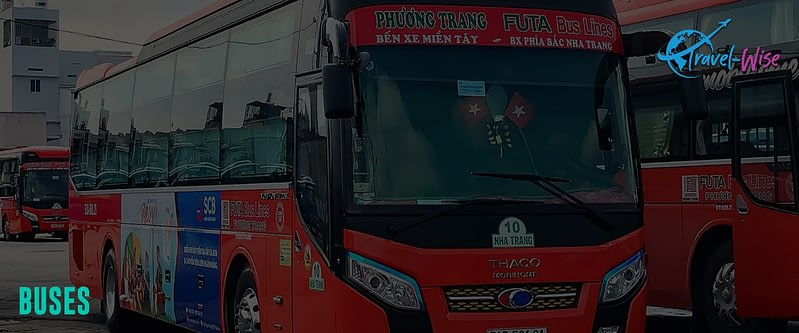
Several long-distance bus tours run from the north to the southern part of Vietnam. The most popular route among backpackers is Hanoi to Ho Chi Minh, with stops in Hue, Hoi An, Nha Trang, Da Lat, and Mui Ne. Along the way, travelers can hop on or off at designated bus stops and stations. Also, most open tour buses are sleepers or have comfortable reclining chairs ideal for long journeys.
Car Rental
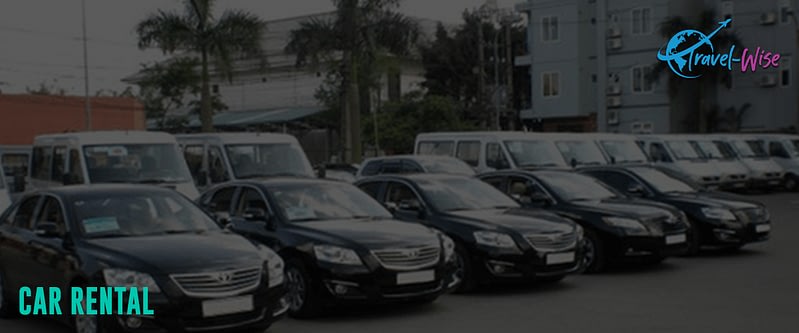
Travelers who want more flexibility and privacy during their trip can opt to hire a car when in Vietnam. And depending on the carmaker and model, prices start at $20 per day for multi-day rentals.
Motorbike and bicycle rentals are also available and are perfect for sightseeing in the historical sites of Hanoi and Hue and the countryside. Motorbike is the most popular mode of transport for locals and tourists in Vietnam.
Public Transportation
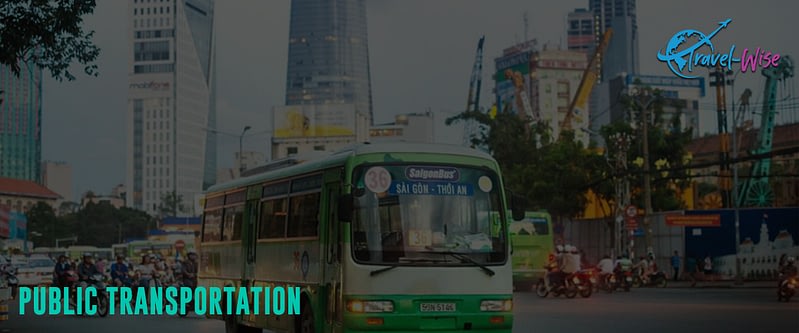
Public transportation in Vietnam is the cheapest way to get around. Bigger cities have local buses and taxis, with cyclo and xe om as the popular option for short-distance trips.
Local Bus
Local buses are popular in Hanoi and Ho Chi Minh and are distinguished by their colors. Ho Chi Minh City buses are green and white, while Hanoi buses are red, white, and yellow. Moreover, visitors can ride the Bus Rapid Transit (BRT) in Hanoi. Ticket prices are affordable, starting at $0.20 for a single ticket.
Taxis
Most urban areas have metered taxis. However, travelers also have the option to hire private taxis to bring them to several destinations in a day. They can choose among reliable taxi companies such as Vinasun and Mai Linh. Taxis are available on the taxi stands, or you can book them through mobile ride-hailing apps.
Xe Om
The most popular public transportation in Vietnam is a motorbike taxi locally called Xe Om. It can bring travelers to their destination quickly at affordable costs. However, travelers must practice safety by wearing a helmet.
Cyclo
Another popular public option in Vietnam is Cyclo, a three-wheeled bicycle that is best for exploring short distances. Cyclo is also perfect for exploring the several historical sites of Hanoi and Hue.
Start Trip Planning
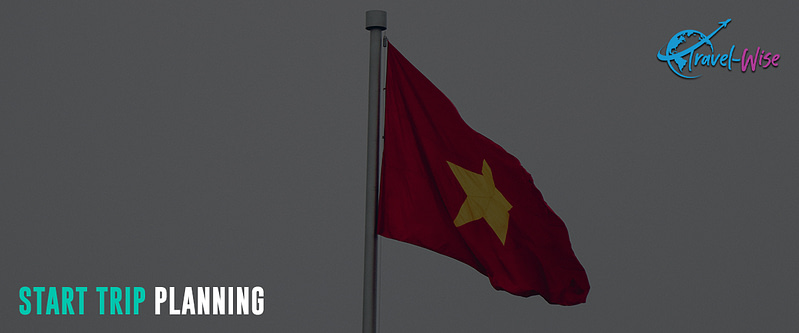
Travel-Wise is made from the ground up to help people travel more, break down the barriers that make it tough to get going, and start your journey as painlessly as possible. Bookmark our other Country Guides to help kick-start your research for future travels. We also offer templated itineraries from our staff and community that help serve as a building block for your trip plans. Alternatively, we also utilize AI to offer a way to generate itinerary ideas. This saves much time just getting you up and running with a template. From there, you can use the trip planner to create your customized itinerary, invite friends and family for collaboration, find others from Travel-Wise to join the trip, book and track important information, journal, and share your experiences at the end or along the way!

